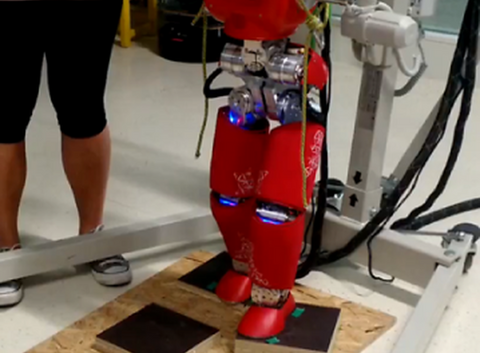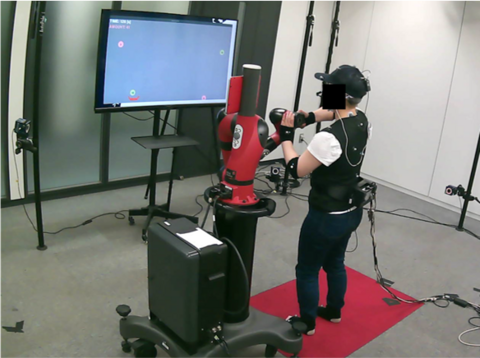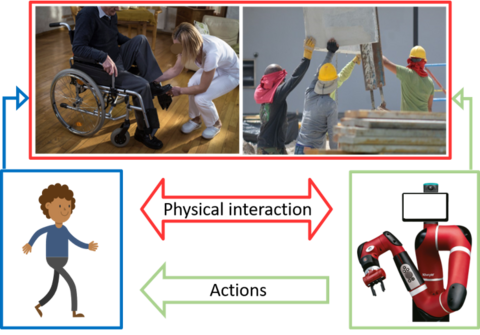Research with the iCub - from walking to teleoperation, what’s behind successful demos
Abstract
The iCub humanoid robot was not meant for walking when it was first “born” in 2008, but a new design of the legs introduced in 2013 unlocked new research and application directions for the robot. In this talk, I will present my experience working with two different iCub robots: one with only torso and legs, and one full iCub with a battery pack. I had several years of first-hand practical experience in implementing demos on the iCub robot, ranging from walking sequences in different environments, to the “Yoga” demo, to the teleoperated loco-manipulation framework. Behind each successful demo, there are years of research, months of practical testing and careful tuning, and many many robot failures and repairs. I will share with you some stories of the success and failures of working with the iCub both in the lab and also in the public!
Mon, Nov 8, 2021 1:00 PM Waterloo, ON, Canada (Online)

Interact with me, Active Physical Human-Robot Interaction
Abstract
Two research directions have been trying to breach the barrier between humans and robots: physically (pHRI), and socially (sHRI), which have been evolving without many intersections. But for robots to really coexist and collaborate with humans, it is necessary to take into account both physical and social interactions. We define active physical human-robot interaction (active pHRI) as a type of interaction during the robot should be able to achieve tasks optimally, efficiently, safely, and at the same time take into account the perception of human users. In this talk, I will illustrate the experiments performed to target a fundamental step towards achieving active pHRI: understanding the relationships between the human’s perceptions and their measurable data when a robot takes direct active physical actions on the human, with insights on outcomes, applications, and developments.
Mon, Jul 19, 2021 11:30 AM — 3:30 PM Munich, Germany (Online)
Towards Active Physical Human-Robot Interaction, an interdisciplinary project and perspective.
Abstract
Robots are often represented in media culture as having incredible capabilities and intelligence and seen integrated rather well into human society. But as roboticists have well learned, real robots are still far from this possibility. Robots are kept at safety distances from human users and installed in isolated and controlled environments. Two research directions have been trying to breach the barrier between humans and robots: physically (pHRI) and socially (sHRI). However, these two directions have been evolving without many intersections; pHRI focuses mainly on the development of controllers to guarantee efficiency and physical safety while sHRI centralizes on the perception and mental state of the human. It is necessary to take into account both physical and social interactions for robots to coexist and collaborate with humans. In this joint talk, Dr Hu will present the experiment where she investigates an active physical human-robot interaction (active pHRI): a type of physical interaction in which the robot should be able to achieve tasks optimally, efficiently, and safely considering the perception of human users. Dr Abe will present her qualitative analysis of the interaction between the experiment participant and the robot during a task through the interview. The talk will also address some insights on the first results and perspectives in interdisciplinary project for future developments.
Thu, Jun 10, 2021 1:00 PM Sydney, Australia (Online)

Active physical Human-Robot Interaction, a step towards “closer” robots.
Abstract
Robots in science fiction have incredible capabilities and are often seen blending rather well in human society, roaming around complex populated environments. But as roboticists have well learned, real robots are still far from this possibility, with robots that are often still kept at safety distances, caged, or in isolated environments, far from human reach. Two research directions have been trying to breach the barrier between humans and robots: physically (pHRI), and socially (sHRI). However, these two directions have been evolving without many intersections, with pHRI focused mainly on the development of controllers to guarantee efficiency and physical safety, and sHRI centralized on the perception and mental state of the human. But for robots to really coexist and collaborate with humans, it is necessary to take into account both physical and social interactions, achieving an active physical human-robot interaction (active pHRI): a type of physical interaction in which the robot should be able to achieve tasks optimally, efficiently, safely, and at the same time take into account the perception of human users. In this talk, I will illustrate the experiments we performed to take a first step towards achieving active pHRI by trying to understand humans, with some insights on the first results and perspectives on future developments.
Wed, Jan 27, 2021 3:00 PM Tokyo, Japan (Online
